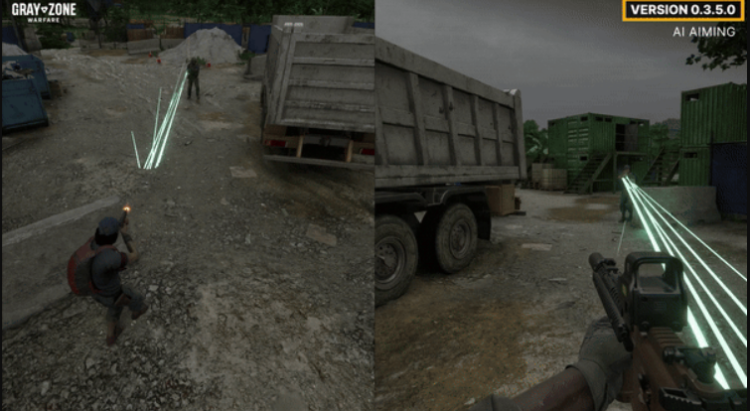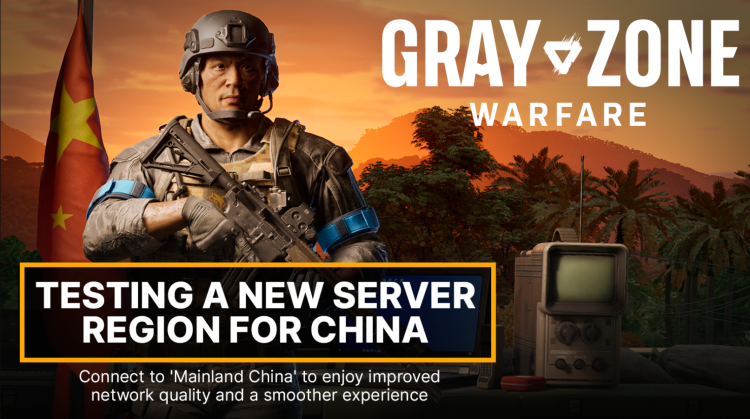Gray Zone Warfare Update Upgrades To Unreal Engine 5.5, Bringing Major Performance Boost
MADFINGER Games has released a substantial Gray Zone Warfare update that upgrades the tactical extraction shooter to Unreal Engine 5.5. The move is aimed at improving overall stability and performance, particularly on mid-range and lower-end PCs. Version 0.3.5.0 represents four months of development work, introducing performance gains, AI refinements, and dozens of community-driven fixes that continue shaping the game’s technical foundation.
The upgrade to Unreal Engine 5.5 introduces parallel rendering, a feature that better distributes processing load across CPU cores. The result is a notable improvement in frame stability, with reports of doubled performance on older systems such as Intel’s i7-8700. RAM usage has dropped by roughly two gigabytes, and VRAM consumption has been reduced by about 400 megabytes across all systems. The studio also implemented AMD FSR 4 and updated NVIDIA’s DLSS plugin to version 8.1.0, ensuring better upscaling support for both hardware ecosystems.
Johanny Clerc-Renaud, MADFINGER’s Chief Technology Officer, noted the technical payoff of the migration.
“Upgrading to Unreal Engine 5.5 allowed us to greatly improve performance on weaker hardware and heavy in-game locations, doubling performance on an Intel i7-8700. Version 0.3.5.0 delivers four months of daily fixes and optimizations from the Gray Zone Warfare programming team, eliminating many shader compilation stutters, reducing remaining hitches, and continuing work with Epic and NVIDIA to resolve GPU crashes.” — Johanny Clerc-Renaud
Beyond raw optimization, Patch 0.3.5.0 focuses on realism and responsiveness. Weapon sway has been recalibrated to move naturally with player motion, while recoil behavior now draws from physical recoil energy calculations. The introduction of a new “Gas Factor” system ties weapon control to muzzle devices, gas blocks, and suppressors, forcing players to consider mechanical trade-offs in weapon customization. Automatic weapons now feature unique recoil patterns defined by their receivers, offering more authentic shooting feedback and fine-tuned balance across the arsenal.
Artificial intelligence has been overhauled to behave with greater human variability. Instead of mechanical precision, AI combatants now adjust their accuracy and reaction times according to weather, distance, injuries, suppression, and even the intensity of fog or rain. Factors such as target movement and duration of engagement further influence their decision-making, yielding combat encounters that feel less scripted and more situationally reactive.

Sound and animation have also received extensive work. All gunfire audio has been rebalanced for clearer directional perception, while the first-person animation system has been optimized to remove abrupt hand movement and camera shake. The overall feel of movement and weapon handling is smoother, aiming to reduce visual fatigue during prolonged firefights.
Gameplay refinements touch nearly every layer of experience. The death sequence now dynamically turns the player’s view toward the origin of the fatal shot, adding contextual awareness to the moment of defeat. Bullet penetration and blood effects have been reworked to better reflect impact realism, with headshots now carrying greater lethality. Strike mission rewards have been balanced to scale with each region’s risk level, and a new server region in Mainland China has been added to address latency and packet loss for Asian players.

Several long-standing community issues have been addressed. Fixes include corrected nighttime lighting, improved scope visibility under adverse weather, and more consistent key drop rates across Fort Narith and other high-traffic areas. Many technical bugs have been removed — from vanishing flashlight beams to improperly functioning NVGs and shader hitches tied to Unreal’s caching system. These changes collectively mark a step toward long-term stability and more predictable gameplay across environments.

Other under-the-hood improvements include an updated Oodle compression library to reduce Intel CPU crashes, upgraded Wwise audio middleware, and a new internal benchmarking tool that recommends optimal settings per user system. Players can now choose whether to reconnect to a previous session or start on a new server, adding flexibility for those facing unstable connections. The update also features dozens of interface corrections, ranging from better localization handling to consistent squad management and messenger functionality.
Key updates from Gray Zone Warfare Patch 0.3.5.0 include:
- Unreal Engine 5.5 integration and parallel rendering support
- Reduced RAM and VRAM usage across all systems
- Reworked AI with adaptive, human-like aiming
- New recoil physics and weapon sway
- Improved nighttime lighting and scope visibility
- Expanded server regions, including Mainland China
- Numerous crash fixes and animation optimizations
The studio’s incremental update strategy reflects Gray Zone Warfare’s maintenance role in the modern extraction shooter space. By addressing systemic performance issues and refining foundational mechanics rather than chasing cosmetic trends, MADFINGER continues shaping its title as one of the genre’s more technically ambitious works.
Read also the March 2025 update “Winds of War” expanded Gray Zone Warfare with dynamic weather, new PvP mechanics, and larger combat zones, signaling the team’s ongoing effort to make its world feel more reactive and alive.


EGAMERSW - get 11% Deposit Bonus + Bonus Wheel free spin
EXTRA 10% DEPOSIT BONUS + free 2 spins
BEST ODDS, free daily case, free rains, daily, weekly and monthly rakeback!

Sign up now and get 2 FREE CASES + 5$ Bonus
3 Free Cases + 100% up to 100 Coins on First Deposit



Comments